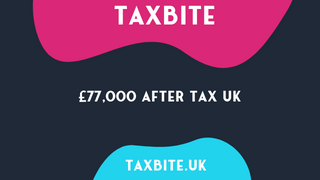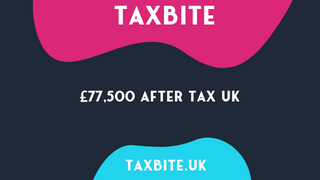Calculating take-home pay after tax deductions may seem like a mundane task, but it can make a huge difference to your monthly finances. As the upcoming tax season approaches, it’s crucial to understand how changes to tax rates will impact your take-home pay. In this section, we’ll discuss the importance of knowing your take-home pay and how it affects your overall financial well-being.
Knowing your take-home pay is essential for managing your finances. It’s what you receive after taxes, deductions, and contributions have been taken out of your gross income. This figure is important for knowing your funds to pay bills, debts, and investments.
Understanding your take-home pay is a must. Without proper knowledge, this can lead to financial difficulty due to missed payments and unexpected costs. Not being aware of tax brackets and deductions could cause you to underestimate the amount taken from your salary and overspend.
Getting a good grasp of your take-home pay helps you budget. This info tells you how much you can spend on rent, utilities, groceries, fun, and more. Plus, you can save for emergencies and retirement.
In the end, knowing your take-home pay helps you make decisions to manage your finances successfully. By doing so, you can plan for both short and long-term goals while maintaining financial stability.
Calculating take-home pay for a £74,000 yearly income in 2023/2024 may seem overwhelming, but understanding the different tax bands and deductions is essential to accurately determine your actual earnings in England, Scotland, Wales, and Northern Ireland. In addition to taxes, there are also deductions for national insurance contributions, student loan repayments, and pension contributions to consider. By analyzing these factors, you can gain a clearer picture of your actual income.
Calculating your take-home pay in the UK demands an understanding of each region’s particular tax bands and deductions. Your salary deductions depend on where you live: England, Wales, Scotland, or Northern Ireland.
Table 1 shows each country’s personal allowance threshold, basic rate tax band threshold, higher rate tax band threshold, and additional rate tax band threshold. Additionally, the table displays the percentage of National Insurance contributions deducted based on your income bracket.
| Region | Personal Allowance | Basic Rate | Higher Rate | Additional Rate | NICs | |
|---|---|---|---|---|---|---|
| England | £12,570 | £12,571 – £50,270 | £50,271 – £150,000 | > £150,000 | 12% | |
| Wales | £12,570 | £12,571 – £50,270 | £50,271 – £150,000 | > £150,000 | 12% | |
| Scotland | £12,570 | £12,571 – £14,585 | £14,586 – £25,158 | £25,159 – £150,000 | > £150,000 | 12% |
| Northern Ireland | £12,570 | £12,571 – £37,700 | £37,701 – £125,000 | > £125,000 | 12% |
Moreover, further deductions such as student loan repayments and pension contributions may reduce your net income. Thus, it’s essential to include these factors when calculating your take-home pay.
In conclusion, understanding the different regional tax brackets within the UK is vital for calculating take-home pay. Each country has its own income thresholds for various tax bands, and the NIC contribution percentages are distinct too. Examining other deductions such as pension contributions and student loan repayments is essential for arriving at net income figures.
Knowing the deductions for National Insurance Contributions is essential to work out take-home pay. By law, both employers and employees have to make these payments. The contributions help fund state benefits, like the National Health Service and pensions.
The NICs owed depends on income, tax bracket and age. UK employees earning between £9,581 and £50,270 per year (2021/2022 rates) pay 12% of their earnings. Above this amount, the contributions increase to 2%. Employers contribute a share based on employee earnings.
Self-employed and business owners must make annual payments via Self-Assessment Tax Return towards Class 2 NICs (£3.05 per week) and Class 4 NICs (9% of profit from £9,501 up to £50k p.a., then 2% of profits over £50k).
To be eligible for state benefits in the future, or when unable to work due to illness or disability, it’s important to make enough NICs payments each year. Consider making voluntary contributions if necessary – these are often more affordable than later compulsory payments.
Calculating take-home pay can be complex. There are deductions like student loan repayments and pension contributions. For those with a yearly income of £74,000 in the tax year 2023/2024, there are multiple options. The table below shows the options and % of income deducted for each.
| Deduction | % of Income | Calculation Options |
|---|---|---|
| Student Loan Repayments | Varies | Plan 1, Plan 2 or Postgraduate Loans |
| Pension Contributions | Varies | Workplace Pension Scheme or Private Pension Scheme |
The % may vary depending on the individual’s circumstances and chosen plan. Plan 1 is for those who started uni before September 2012. Plan 2 is for those who started after. Postgraduate loans are for master’s degrees or PhDs.
Pension contributions have two options. Workplace Pension Scheme provided by an employer or a private pension scheme. Both have different contribution rates and benefits. It’s important to weigh pros and cons before deciding.
Knowing calculation options for student loan repayments and pension contributions can help make informed decisions and plan accordingly when calculating take-home pay after tax deductions.
If you are wondering what your net income would be with an annual income of £74,000 after tax deductions, we can provide accurate information. In this section, we will provide you with a comprehensive breakdown of where your money will go, including personal allowances and pension contributions. We will also cover tax deductions at basic, higher, and additional rates, NIC deductions, student loan deductions, and other related topics. Stay tuned to learn more about tax deductions and how they affect your annual income.
Calculating take-home pay? In the UK, tax deductions must be considered. For a yearly income of £74,000, tax bands and deductions vary in England, Wales, Scotland and Northern Ireland. The key tax bands are personal allowance, basic rate, higher rate and additional rate. These determine the deducted amount. Plus there are national insurance contributions (NIC).
To calculate the 2023/2024 income tax for a yearly income of £74,000, different deductions based on the tax bands are made. See the table below:
| Tax Bands | Gross Annual Salary | Deducted Amount |
|---|---|---|
| Personal Allowance | Up to £12,570 | -£12,570 |
| Basic Rate Tax Band | £12,571 to £50,270 | 20% of (Gross Annual Salary – £12,570) |
| Higher Rate Tax Band | £50,271 to £150,000 | 40% of (Gross Annual Salary – £50,270) |
| Additional Rate Tax Band | £150,000 and above | 45% of (Gross Annual Salary – £150,000) |
Student loan repayment and pension contributions can also be made. Personal allowance threshold and NIC contribution rates affect taxable income.
The UK tax system is pay-as-you-earn. Income tax and NIC contributions are paid as salary. For £74,000 yearly salary, tax contributions are paid off in approximately 6 months. Taxes fund healthcare and education services.
Individuals earning a salary of £74,000 must abide by certain rules for National Insurance (NIC) deductions. Both employers and employees contribute to these payments. The amount of NICs deducted varies depending on location. Most employed individuals must pay Class 1 NICs.
To calculate the deduction amounts, reference data provides an example table. In 2023/2024, employees earning over £50,270 and up to £74,600 per annum will contribute 12% of their earnings above £9,568 as their Class 1 NICs contribution. Employers will also pay a similar amount plus £170 for each employee in this income range.
Self-employed individuals are also subject to NIC deductions based on income thresholds and contribution rates. If their earnings exceed £6,515 per annum (with some exceptions), they must pay Class 2 contributions. If profits exceed £9,568, they must make a separate Class 4 contribution.
National Insurance contributions were established in 1911 to fund pensions and other welfare benefits. This scheme expanded after WWII, allowing all to benefit from these funds today.
When it comes to money management, it’s important to explore the different options for student loan and pension contributions. Depending on the loan plan and amount borrowed, the repayment calculation can differ. Pension contributions can also be adjusted based on finances or life events.
You may need help understanding these deductions. An expert can advise on making changes to student loans and pensions, such as taking out annuity rates or considering investment risks. Also, gaps in National Insurance can be filled with voluntary credits.
It’s important to remember that those earning £74,000 or more must pay their tax and NIC contributions. Get informed and seek advice to make the best decisions for your finances.
Paying off tax contributions can be a challenging task, particularly when you earn a yearly income of £74,000. However, with the correct information, you can overcome this challenge. In this section, we will explain:
Take charge of your finances and acquire knowledge on how to efficiently manage your tax contributions.
Knowing how much earned income is needed to pay tax contributions is key for people who want to stay financially sound. To calculate the earned income needed for taxes, you must consider various factors like tax band, national insurance contributions, and pension plan contributions. These may include personal allowances, basic rates, higher rates, additional rates, and NIC deductions based on income thresholds and contribution rates.
For example, the table below shows the breakdown for £74,000 yearly income:
| Factor | Amount |
|---|---|
| Personal Allowances | £12,570 |
| Basic Rates | £24,400 |
| Higher Rates | £37,700 |
| Additional Rates | £74,000 |
| National Insurance Contributions | £10,648 |
| Student Loan Repayment | £9,448 |
| Pension Contribution | £0 |
| Net Income | £53,205 |
It’s important to remember that the income needed to pay taxes and NIC contributions can change depending on your salary and the tax laws in England or your country. Plus, you should stay up-to-date with changes to tax laws, national insurance contributions, and other deductions that affect earned income. This can help you remain financially stable and keep accurate financial records to dodge any penalties or legal actions from tax noncompliance.
HM Revenue & Customs (HMRC) collects taxes and administers financial regulations in the UK. HMRC also fines or takes legal action against individuals who don’t pay their taxes or NIC contributions on time. Thus, it’s vital to keep track of the earned income needed for tax contributions to stay financially stable and avoid penalties from HMRC.
It’s important to know the timeline for paying taxes and National Insurance contributions.
In 2023/2024, when your yearly salary is £74,000, you must figure out the income needed to cover these deductions. To show the calculations, a table can be made. It should include:
You also have to look at other deductions. These can be employer-provided pension schemes and company car taxes. They can affect your net income and financial situation. Knowing all this can help you handle finances better and plan for future expenses more precisely.
The average payslip has a few different deductions. These can include pensions, company car taxes, and even extra benefits like private healthcare and gym memberships. It’s worth noting that the amount taken off for pensions and company car taxes differs depending on the person and their employer.
For example, in 2023, someone earning £74,000 after tax would have to pay £457 a month to their pension if they save 7%. This demonstrates the value of pension deductions from a payslip; they help to ensure a good retirement. Plus, a person with a company car will owe a benefit charge determined by the car’s value and CO2 emissions.
The Office for National Statistics did a survey which showed that, on average, UK employees contributed £223 to their pension in 2020. This shows the importance of knowing the deductions from a payslip, especially pensions and company car taxes, as they can greatly affect net income.
Additional information: According to income-tax.co.uk, the tax breakdown for a yearly income of £74,000 in the 2023/2024 tax year is £7,540 at the basic tax rate of 20% on earnings up to £37,700, £9,492 at the higher tax rate of 40% on earnings up to £23,730, with no tax at the additional tax rate of 45%. The National Insurance due on a £74,000 income is £4,998, with £4,523 at the 12% rate on earnings up to £37,695 and £475 at the 2% rate on earnings up to £23,736.
A tax calculator is a tool that calculates income tax and national insurance deductions from a salary based on various factors such as job category, income level, and location.
Take-home pay is calculated based on a gross income provided in different time intervals such as yearly, monthly, daily, and hourly. The tax year for the calculations ranges from 2012/2013 to 2023/2024.
The deductions that make up the salary after tax include income tax, national insurance contributions, and other deductions such as student loan repayments, pensions, and company car taxes.
For Scottish residents, the salary after tax is a little different because of the Scottish income tax bands. Residents in England, Wales, and Northern Ireland have a higher take-home salary after tax than residents in Scotland for the 2023/2024 tax year.
There are four tax bands: 0% for personal allowance up to £12,570, 20% for basic rate between £12,571 and £50,270, 40% for higher rate between £50,271 and £150,000, and 45% for additional rate above £150,000.
National Insurance Contributions (NIC) is calculated at 13.25% after you earn £12,570. You won’t pay NIC on anything before that amount. NIC letter codes include A (standard), B (married women/widow), C (over state pension age), D (contracted out-salary), E (contracted out-salary reduced), F (contracted out-money purchase), G (contracted out-money purchase reduced), J (deferment), L (contracted out-salary deferred), S (contracted out-money purchase deferred), and X (no liability).
Here’s a list of similar salaries:



















